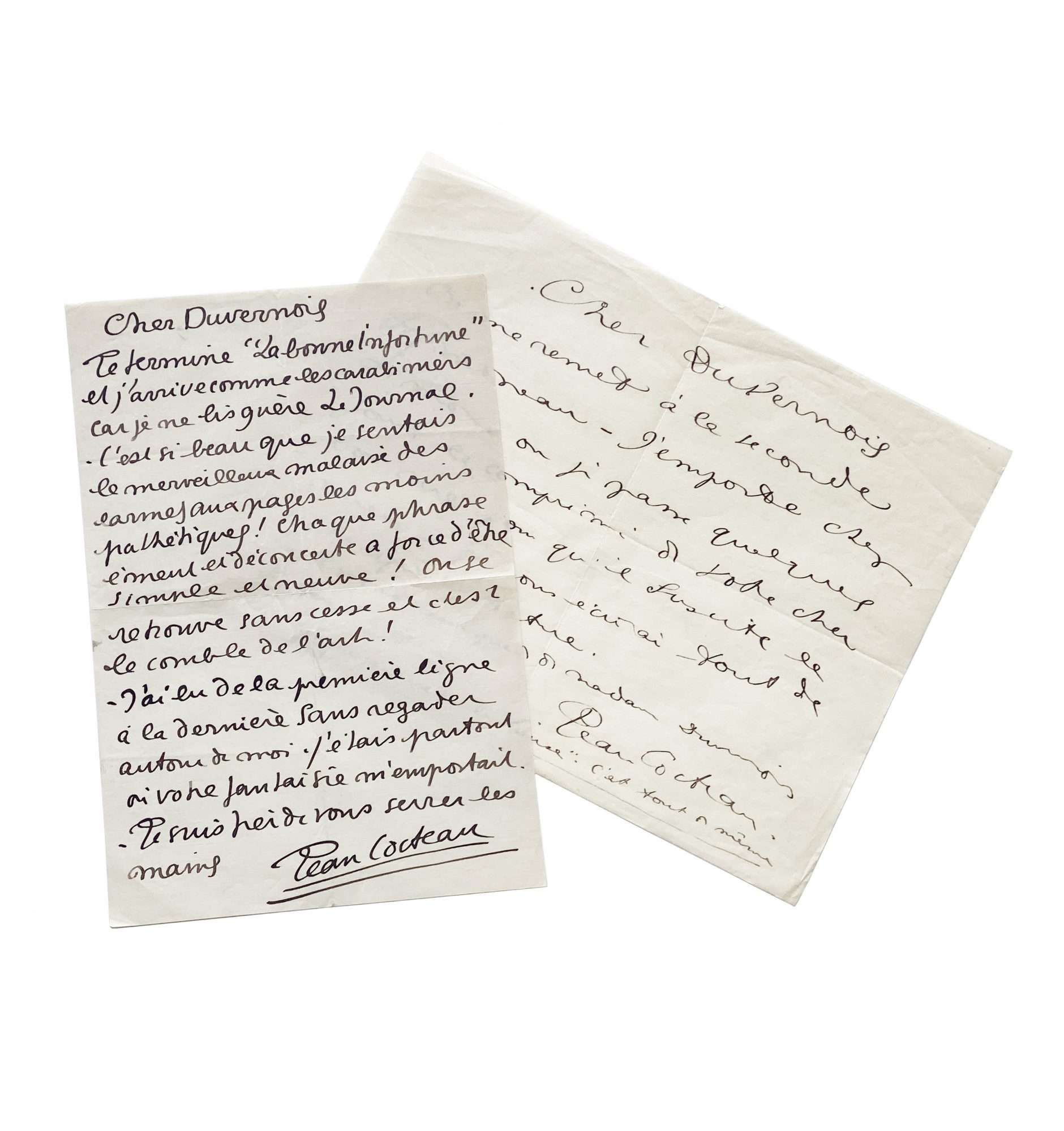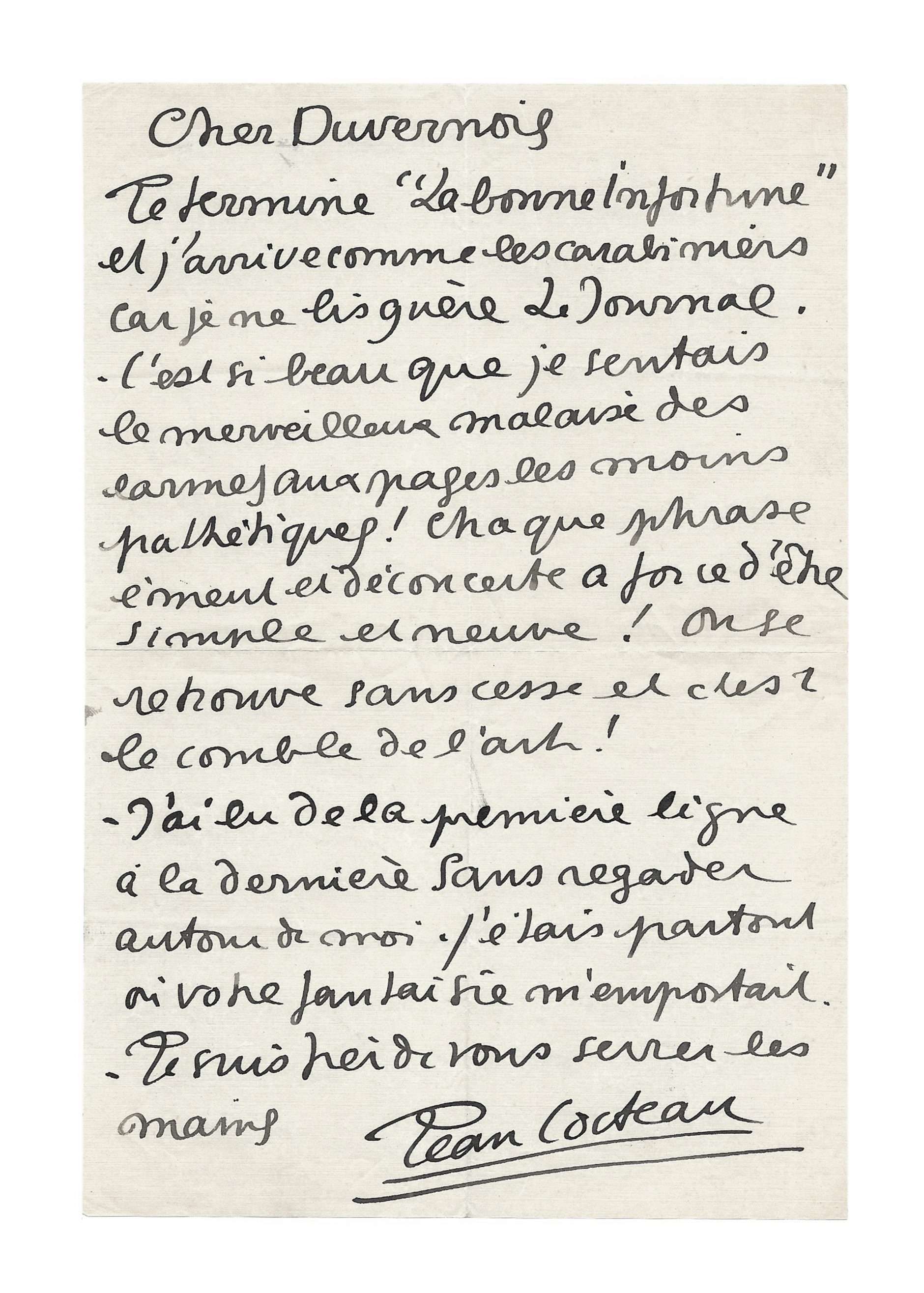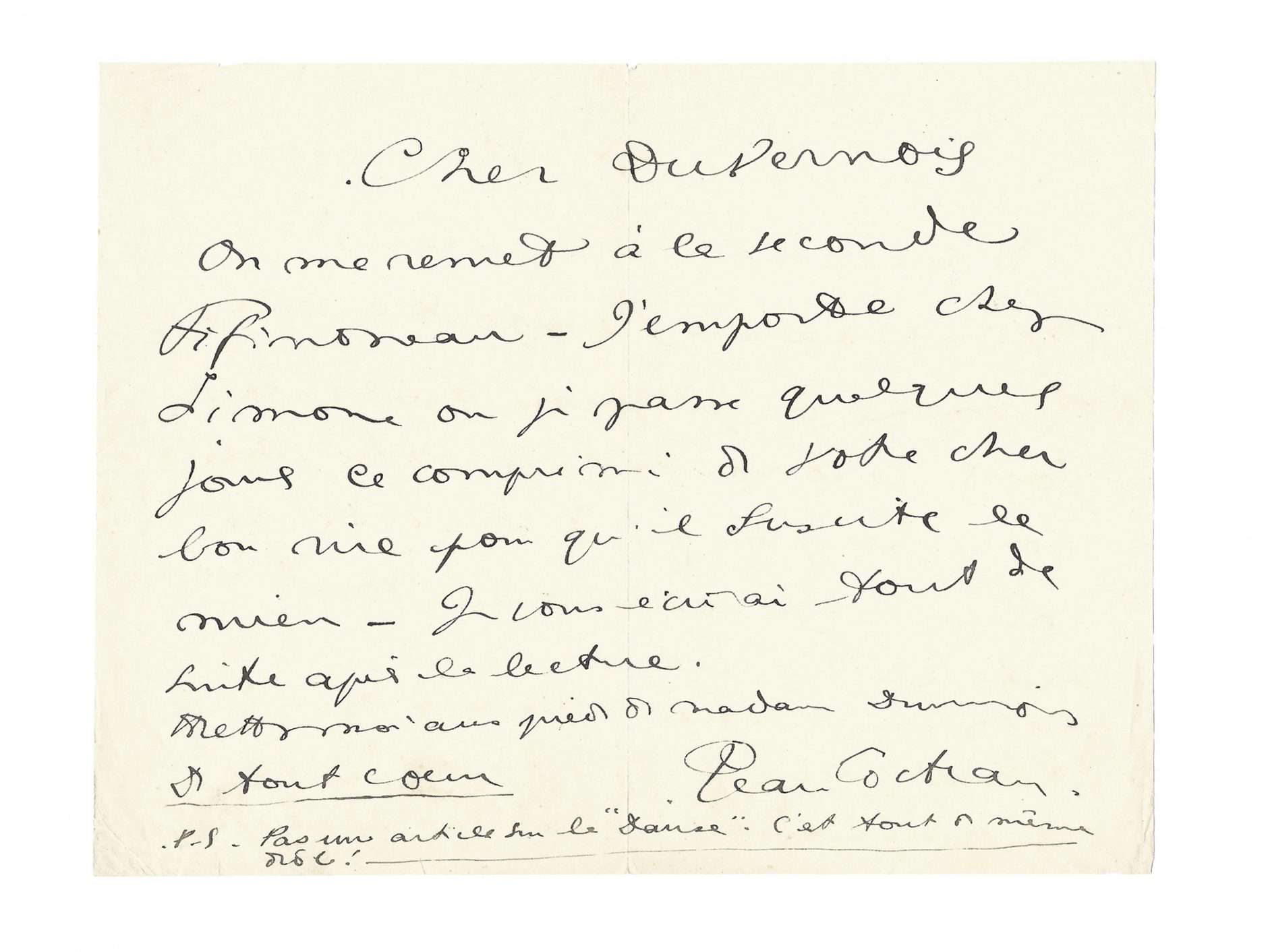COCTEAU, Jean (1889-1963)
Two autograph letters signed « Jean Cocteau » to Henri Duvernois
N.p.n.d, c. 1912, 2 p. in-4°
« Not an article about “Dance”. It’s funny! »
Fact sheet
COCTEAU, Jean (1889-1963)
Two autograph letters signed « Jean Cocteau » to Henri Duvernois
N.p.n.d, c. 1912, 2 p. in-4°
Usual fold marks from period, very tiny tear on bottom margin of the second letter (see scans)
Two rare letters from Cocteau’s youth to his friend Duvernois and evoking La Danse de Sophocle, his third collection of poetry, which he would eventually disown
« Cher Duvernois,
Je termine “La bonne infortune” et j’arrive comme les carabiniers car je ne lis guère le journal. C’est si beau que je sentais le merveilleux malaise des larmes aux pages les moins pathétiques ! Chaque phrase émeut de déconcerte à force d’être simple et neuve ! On se retrouve sans cesse et c’est le comble de l’art !
J’ai lu de la première ligne à la dernière sans regarder autour de moi. J’étais partout où votre fantaisie m’emportait.
Je suis fier de vous serrer les mains.
Jean Cocteau »
« Cher Duvernois
On me remet à la seconde Fifinoiseau – J’emporte chez Simone [Benda] où je passe quelques jours […] Je vous écrirai tout de suite après la lecture.
Mettez-moi au pieds de Madame Duvernois.
De tout cœur
Jean Cocteau
P.S. Pas un article sur la “Danse” [de Sophocle]. C’est tout de même drôle !
Born into a wealthy Parisian family that supported his artistic career, Cocteau published his first self-published collection of poems in 1909, Aladdin’s Lamp, inspired by the Arabian Nights. He then made a name for himself in bohemian artistic circles, such as Le Prince Frivole. This was the title of his second collection of poems, published in 1910. His third collection of poetry, The Dance of Sophocles, was published in 1912. He would later disown these three early works.
Later, his meeting with Serge Diaghilev, whom he wanted to astonish, marked the first crisis in his work: he renounced his collections of poems and moved closer to the Cubist and Futurist avant-garde.





